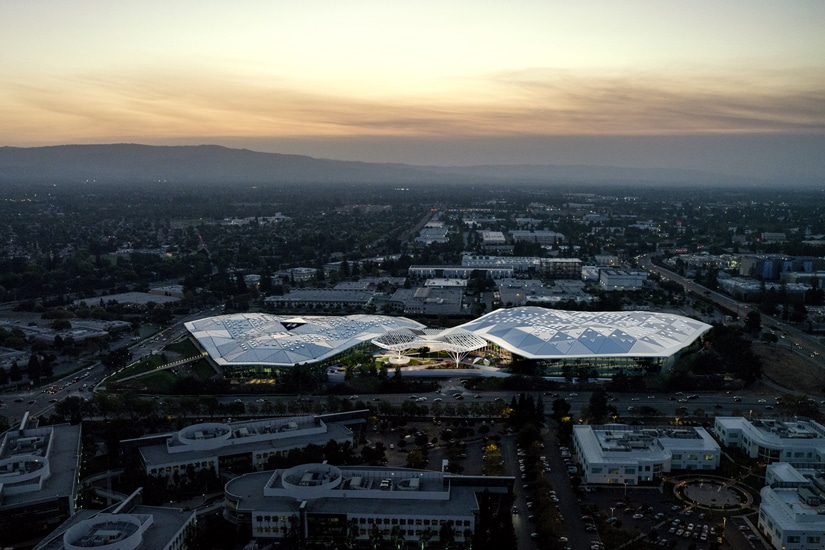|
Getting your Trinity Audio player ready...
|
For Jennifer Marko, understanding her company’s culture is critical to providing an effective workplace strategy. Culture often emanates from the executive leadership, and according to Marko, “My design philosophy is to align the workplace design with the executive leadership’s vision and then to champion it throughout the global real estate portfolio.”
In her current position as senior director of global workplace planning and design at NVIDIA, this means fostering a workplace strategy that reflects NVIDIA’s transparent and team-oriented business philosophy, flat organizational structure, and culture of collaboration. It also means drafting a set of design guidelines that can be implemented on a global scale, capturing both the nuances of NVIDIA’s brand as well as infusing the subtle local flavor into each workplace while constantly remaining innovative. “Our design guidelines will fluctuate as times change, new products are created, and our businesses evolve, thereby making them incredibly dynamic,” she continues, “but still aligned to the overall executive leadership’s vision.”
Marko spent half of her career working for architectural firms on the service-provider side of the real estate industry and the other half working in an end-user capacity at Salesforce, Genentech, and AIG. This included several international experiences, which fueled her desire to continue working on a worldwide scale. Through these experiences, she developed an appreciation for merging the qualitative and quantitative aspects of workplace strategy to create effective and thoughtful environments.
When she joined NVIDIA in early 2018, Marko was able to write her own job description. “NVIDIA’s COO and the head of real estate created an opportunity for me to help build, shape, and formulate a robust planning and design team to provide a best-in-class service offering for NVIDIA’s stakeholders,” she says. “Since I love using data to inform how we should be planning space and outfitting the workplace, this position was a great way for me to bring together a creative and analytical approach to workplace strategy while aligning with the NVIDIA culture.”
At NVIDIA’s headquarters in Santa Clara, California, Marko and her team are in the midst of enhancing the workplace and testing ways to use data to drive design decisions. Using data coupled with conversations with the leaders and teams, a pilot is being launched for a mobility program to test the benefits and drawbacks of implementing unassigned seating. Analyzing the results of this pilot will then provide direction on how and to whom they will roll out the ‘NV Touchdown’ program globally.
Marko explains that partnering with the IT team to capture conference-room utilization data is imperative to designing effective support spaces. The understanding of peak meetings times and how often they occur provides data on how to create these types of spaces and is integrated in all new work environments. “There are many points of data that can be captured within a real estate portfolio,” she says, citing utilization of space, vacancy by site, and real estate costs as a percentage of revenue as examples. “These quantitative stats combined with qualitative information can provide a holistic view of the performance of the work environment. It’s critical to capture the data that aligns with the culture of your company that then supports the transformation of the workplace.”

One of the many discoveries unearthed by Marko’s team is that the relationship between different types of spaces affects how often those spaces are utilized. People tend to not use open collaborative spaces if they are within the desk areas where others are concentrating. “One of our planning methodologies is to use hard-walled meeting or phone rooms as buffer spaces between heads-down work areas and high activity zones,” says Marko. “Often desk areas are planned with collaboration tables within those spaces. This creates a conflict between the two different work activities and therefore an unpleasant and often unproductive employee experience.”
While Marko works to refine NVIDIA’s workplace design and planning strategy, she notes that the goal is to craft workplace guidelines, not prescriptive standards. Globally, she strives to create a consistent employee experience and timeless interiors that will have a common look and feel but not be exact replicas of one another.
An important aspect of these design guidelines is to create an equal, non-hierarchical employee experience. This is accomplished via an open plan where employees at all levels in the company can work together and couple this open space with an array of enclosed support spaces. “We are focused on working together, in a speed-of-light manner which creates strong team alignment and transparency. The culture here is that everyone comes together, swarms, and helps you figure out the right solution to a problem,” explains Marko. “People sincerely want to help you succeed at NVIDIA and that, in turn, enables the company to succeed.”
This culture is one of the many reasons Marko is so motivated by her work at NVIDIA. “I grew up in Canada, and back then, our newspapers would always focus on World Affairs on the front pages, then as you’d delve deeper into the paper, you would read about the country and then your province and finally your town,” she says. “That’s the same philosophy I have for my professional life: do your best work to benefit your company first and foremost, which will ultimately support your own growth and success.”
Congratulations Jennifer Marko on this well-deserved recognition. One Workplace works with companies at the intersection of design and human behavior, bringing construction, technology, furniture, and services under one roof to create spaces that help companies reach their goals. We support powerful brands and empower stronger cultures from the inside out.


